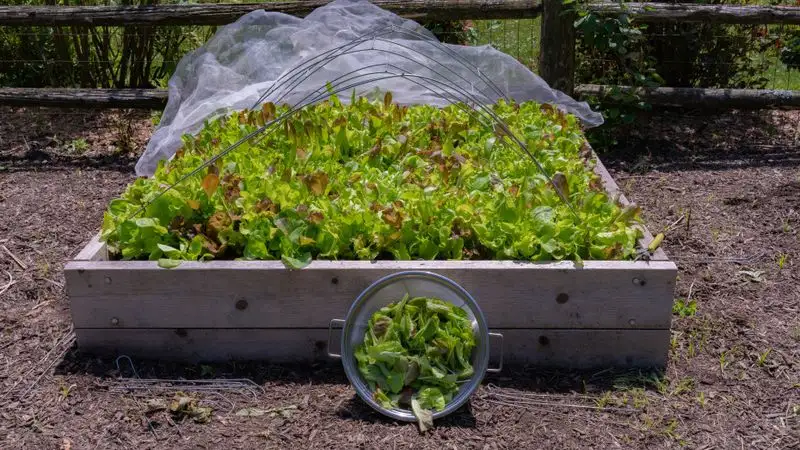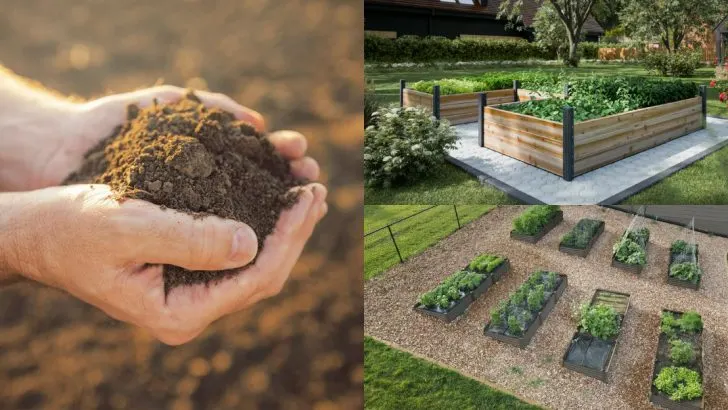Forget everything you think you know about gardening. A fierce battle is brewing in your backyard—raised beds versus in-ground gardens. This showdown promises a harvest that will keep you coming back for more. Picture rows of juicy tomatoes and crisp lettuce glistening in the sun. Which system will make your produce pop with flavor and abundance? Raised beds offer a tidy, controlled environment where every inch of soil is optimized for growth. Their structure gives you quick access and clear boundaries. In-ground gardens, rooted deep in nature, harness the power of organic soil and natural elements, embracing tradition with every seed planted. This isn’t just a debate; it’s a quest for the ultimate yield. Your choice will impact the health of your plants and the bounty of your table. Prepare for a garden transformation that brings your harvest dreams to life. Discover which perfect method will crown your garden kingdom!
Soil Quality

A gardener’s dreams often start with the soil. Raised beds offer the advantage of controlled soil quality, as you can choose the perfect blend. This means fewer weeds and pests, and a reduction in soil compaction. In contrast, in-ground gardens rely heavily on the natural soil, which might not always be suitable for every plant. While amending in-ground soil is possible, it demands effort, patience, and sometimes, a bit of experimentation. Ultimately, raised beds provide a more tailored environment. But, for those willing to nurture the earth below, in-ground gardens still hold their charm.
Water Drainage

Efficient water drainage is a key factor in plant health. Raised beds naturally excel in this domain. With their elevated structure, water drains more effectively, preventing waterlogged roots and promoting healthier plant growth. In contrast, in-ground gardens can face challenges, especially with clayey or compacted soil types that hold water. However, proper soil amendments and organic matter can improve drainage over time. Raised beds offer an immediate advantage, particularly in areas prone to heavy rainfall. However, with a little effort, in-ground gardens can also achieve effective drainage solutions.
Space Utilization

In urban settings, where space is a luxury, raised beds offer a strategic advantage. Their defined boundaries allow for organized planting and can be placed on patios or narrow strips of land. In-ground gardens, however, make use of all available soil without structural limitations. This can be beneficial for larger plots where sprawling plants have room to thrive. Both methods can maximize space efficiently, but raised beds often win in compact areas where every inch counts. In expansive gardens, the freedom of in-ground planting can be quite liberating for gardeners.
Temperature Control

A subtle yet significant aspect, temperature plays a pivotal role in plant development. Raised beds warm up quicker in spring, allowing for earlier planting. This can extend the growing season by a few precious weeks. In-ground gardens, retaining the earth’s natural temperature, may start slower but offer better insulation against summer heat. For those in cooler climates, raised beds provide a clear advantage. Conversely, in areas with intense summer sun, the natural cooling of in-ground gardens can be a plant’s best friend.
Pest Management

Nature’s tiny invaders can be a gardener’s nemesis. Raised beds provide a higher level of control against pests. By elevating plants, the risk of common ground-dwelling pests is reduced. Companion planting and natural barriers can further enhance this protection. In-ground gardens, though more exposed, can also benefit from integrated pest management strategies, such as beneficial insects and crop rotation. Raised beds might offer an upper hand in pest control, but with vigilance and creativity, in-ground gardens can hold their own against the critters.
Aesthetic Appeal

The visual allure of a garden can be as rewarding as its harvest. Raised beds offer clean lines and a modern aesthetic, often enhancing the garden’s overall appearance. They can be customized to fit various styles, from rustic wooden frames to sleek metal designs. In-ground gardens, with their natural flow, bring a more traditional look. They allow for creative landscaping designs that blend seamlessly with the existing environment. Both options offer unique aesthetic opportunities, ensuring that beauty remains an integral part of the gardening experience.
Cost and Maintenance

Gardening with a budget in mind is always wise. Raised beds often come with an initial investment, as materials and soil must be purchased. However, they can reduce long-term costs by minimizing soil issues and maximizing yields. In-ground gardens, typically cheaper to start, may incur more maintenance costs over time due to soil amendments and pest control. The choice between them often boils down to personal priorities and resources. While raised beds demand upfront spending, their efficiency can justify the cost, whereas in-ground gardens offer a more economical start.

